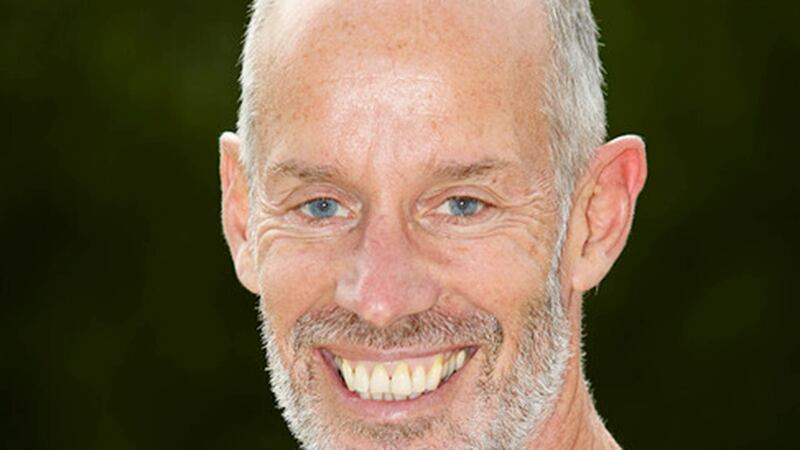You are viewing your 1 free article this month. Login to read more articles.
an awfully big adventure
There comes a moment in every child’s life when they understand that everyone dies: not just pets, or neighbours, or relatives, but even themselves. It’s a terrible, terrifying realisation – life is never the same again once you know that you have to die – so it’s no wonder that children’s books are full of death.
Without death, many great heroes of children’s literature wouldn’t even have a story to tell. If their mothers and fathers had lived, Harry Potter wouldn’t be banished to 4 Privet Drive, the Baudelaires wouldn’t suffer a series of unfortunate events, Mary Lennox wouldn’t come near the secret garden, and James would never grow a giant peach.
But death is much more than a plot device. From a surprisingly young age, most children want to know the answers to questions about death and the afterlife. Why do I have to die? What will happen to me? Fiction allows children to articulate the fears and anxieties about mortality that will haunt them for the rest of their lives.
Into the unknown
John Connolly, who is author of the Charlie Parker crime novels for adults and now several children’s books, remembers exactly when he first understood everyone must die. As a child, he lived with his parents and grandparents. When he was three or four, his grandfather had a heart attack in the night and died in his own bed. "If my grandfather can die," Connolly reasoned, "then my parents are not immortal or immune." An overwhelming terror at the thought of their death eventually led him to develop obsessive-compulsive disorder: to protect them, he came to believe, he had to put his left shoe on before his right shoe or touch the bathroom tap five times. "I thought that if I did these things, my parents would be okay."
Connolly dealt with these themes in The Book of Lost Things, his novel about a boy struggling to cope with the loss of his mother, and they reappear, in lighter form, in his two recent Samuel Johnson novels, The Gates and Hells Bells, which Connolly describes as "comic supernatural fiction" aimed at boys around 12 to 13 years old.
Samuel Johnson is a geeky teenager, the type who takes off his glasses to impress a girl and ends up asking a postbox on a date. Accompanied by a pair of bungling policemen, an ice-cream van, a van full of drunk dwarves and his loyal dog Boswell, he tussles with demons and explores an underworld of "misery, torture, poor food and certain dismemberment." It’s a cheery version of the afterlife, packed with tentacles and explosions, a long way from the desolate, brutal universe of Connolly’s adult novels.
Other children’s writers have taken their readers to much darker landscapes of the afterlife. In The Amber Spyglass, the concluding part of Philip Pullman’s His Dark Materials trilogy, his heroine Lyra meets her own death, whom she persuades to lead her across the water to the Land of the Dead. There she walks among the dead and eventually sets them free. In the third of the Earthsea books, The Farthest Shore, Ursula le Guin sends her hero, Ged, to another version of the land of the dead, where he fights a wizard who has managed to achieve a kind of immortality. Both of these visions of the afterlife are miraculously inventive and imaginative, but they’re also intensely serious, introducing young readers to ideas of pain, loss and self-sacrifice.
The same seriousness suffuses the two great seven-novel sequences of children’s literature, the Narnia books and the Harry Potter series, which both draw heavily on Christian ideas of death and resurrection.
C.S. Lewis began his Narnia series with a moment of delightful fantasy – a girl steps through a forest of fur coats into a magical landscape – but ended them with a heavy-handed metaphor of the Last Judgement, promising a purer existence after death, denying the importance of all that went before. As he wrote in the final lines of The Last Battle: "All their life in this world and all their adventures in Narnia had only been the cover and the title page: now at last they were beginning Chapter One of the Great Story which no one on earth has read: which goes on for ever: in which every chapter is better than the one before."
J.K. Rowling has said, "My books are largely about death," and her novels describe the journey of a boy from the deaths of his parents to a final confrontation with his own mortality. Death belongs to his arch-enemy, Voldemort – whose name even contains it – and their final battle is prophesied and explained in a line from Corinthians that Harry Potter finds engraved on his parents’ tomb: "The last enemy that shall be destroyed is death."
There’s a very different strain of children’s literature that takes a much more sceptical, melancholy view of death, offering no answers. In his Sad Book, the poet Michael Rosen described the death of his son from meningitis and his own unassailable sadness: "What makes me most sad is when I think about my son Eddie. He died. I loved him very, very much but he died anyway." The crisp text, wonderfully illustrated by Quentin Blake, is bleak, honest and moving.
Healing heartbreak
Siobhan Dowd wrote four children’s books before her death at the age of 47. Two were published posthumously and one, Bog Child, won the Carnegie Medal, the most prestigious British award for children’s books. Now Patrick Ness – who has just won the Carnegie Medal himself – has completed her final book, which she left as notes and a synopsis. Appropriately, it’s a novel about death, loss and the pain of the people who get left behind.
A Monster Calls is the story of Conor, a 13-year-old boy whose mother is dying of cancer, just as Dowd did. As her death comes closer, Conor is visited by a monster who has "been alive as long as this land" and now promises to help him confront his terrifying nightmares. The book is a sensitive description of a boy struggling with two contradictory emotions: his fear at the imminent loss of his mother and his guilty desire for her appalling illness to reach some kind of conclusion.
The story is defiantly secular: Conor seeks no solace from religion and never even considers the possibility of an afterlife. Patrick Ness himself had a religious upbringing, but is now agnostic. "My entire life has led me to the great point of ‘I don’t know’," he says. He hopes his own scepticism, and the wisdom that springs from acceptance of doubt, will be communicated to readers of A Monster Calls: "I have journeyed away from the certainty and made my peace with the ‘I don’t know’. When you make peace with the ‘I don’t know’, the focus becomes on making this life bearable and this life full of love and this life without loneliness, which is what I really hope this book is about."
For Conor, such wisdom is unavailable. As a 13-year-old, he doesn’t have any experience of loss, and can’t console himself with the thought that things will change. "I’m always surprised when adults don’t remember their teenage years," says Ness. "I remember mine painfully. I remember all the good stuff – having a laugh with friends, all the rebellion, all the troublemaking – but I also remember that when things felt bad, they felt bad forever." He draws on these memories to describe the unbearable loneliness and bitter pain of a boy whose mother is slowly slipping away. "The blessing and the curse of being a young person is that every day feels like forever. When things are going great, that’s brilliant, but when things are going badly, it feels like there will never be any other way."
Death's romance
For Luce Price, heroine of Lauren Kate’s Fallen series, this feeling that "every day feels like forever" isn’t simply part of being a teenager: it’s what actually happens to her and her lover, an angel named Daniel Grigori. In Passion, the third in the series, Luce travels through history, visiting her previous incarnations. Whether she is existing as Luschka in Moscow during the Second World War, Lucinda in Cornwall in 1854, Princess Lys in Versailles in 1723 or Layla in Ancient Egypt, she suffers the same fate: she falls passionately in love with the same gorgeous man, the immortal Daniel, then dies, leaving him desolate and alone.
According to Kate, Luce’s repeated reincarnations "are not deaths in the normal sense of the word. They’re chances to redo something." Immortals are fascinating because they have endless opportunities to perfect themselves. "There’s something very appealing to me, and to a teen reader, about having infinite chances to get something right."
But immortality doesn’t just mean never dying; it also means never growing up. As Peter Pan, the greatest immortal in children’s literature, cries: "No one is going to catch me and make me a man."
Perhaps that’s another reason why death is such a resonant subject for children: because dying is an unavoidable consequence of becoming an adult. As the first line of Peter Pan and Wendy warns:
"All children, except one, grow up."
Josh Lacey is the author of The Island of Thieves, published by Andersen Press.














